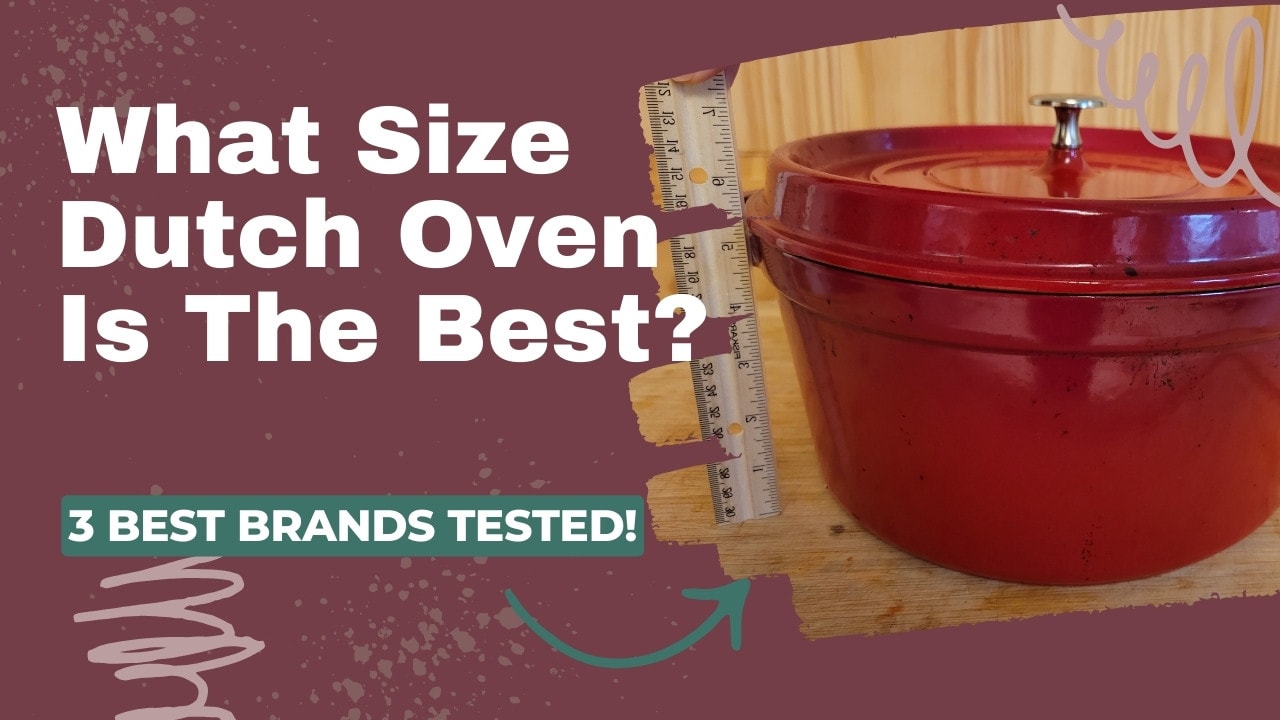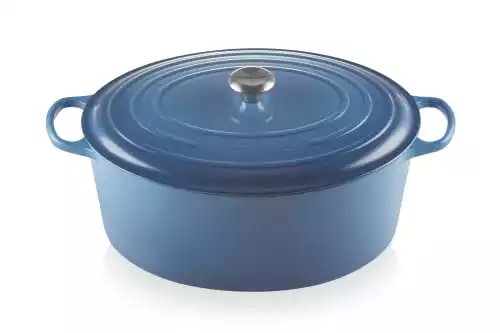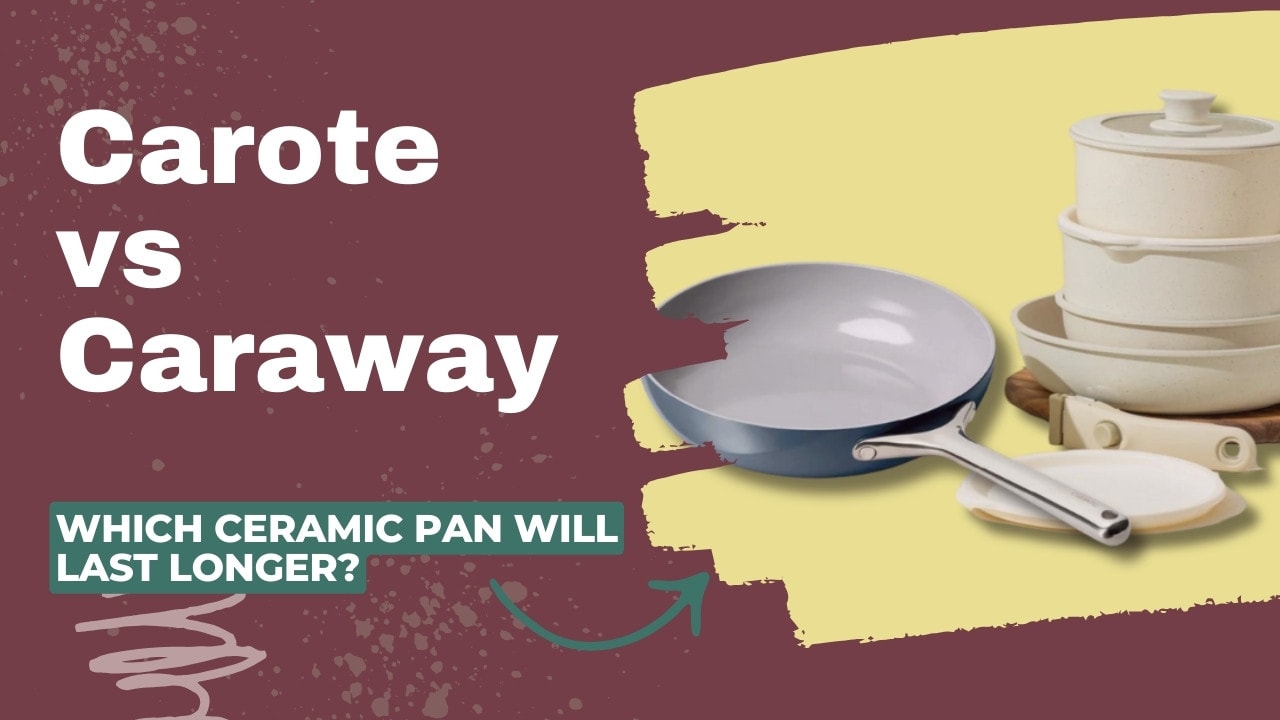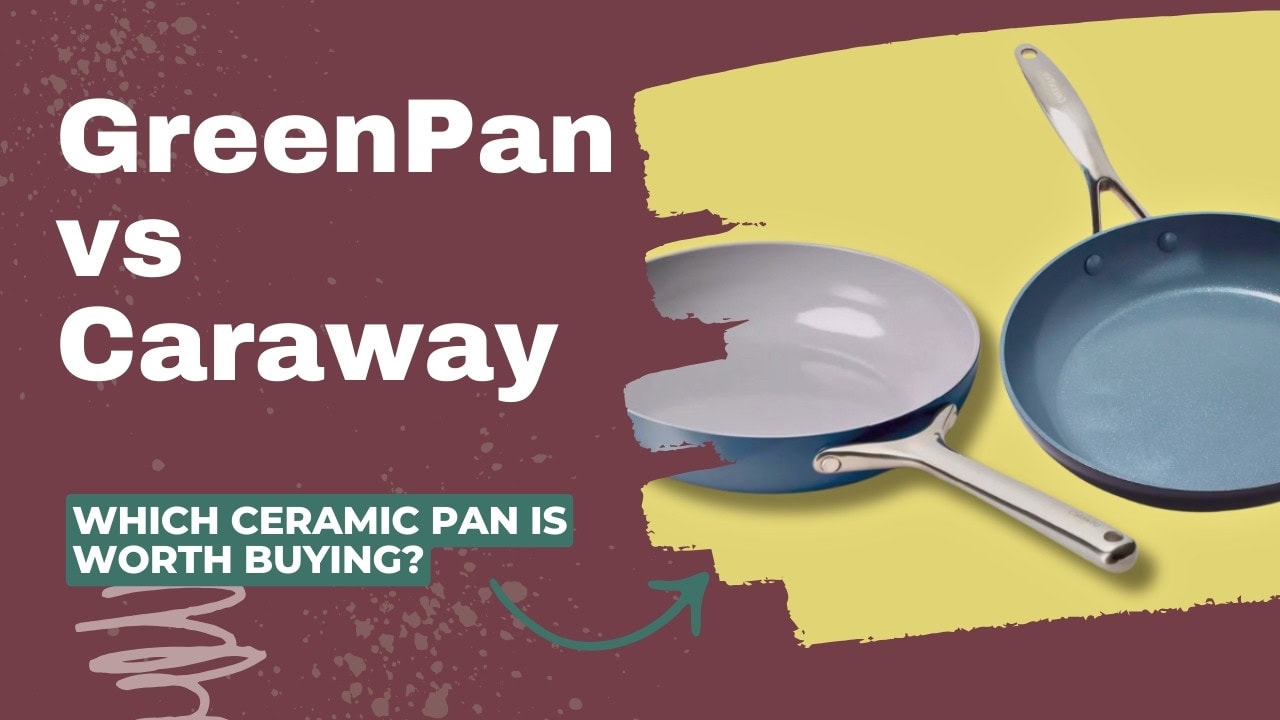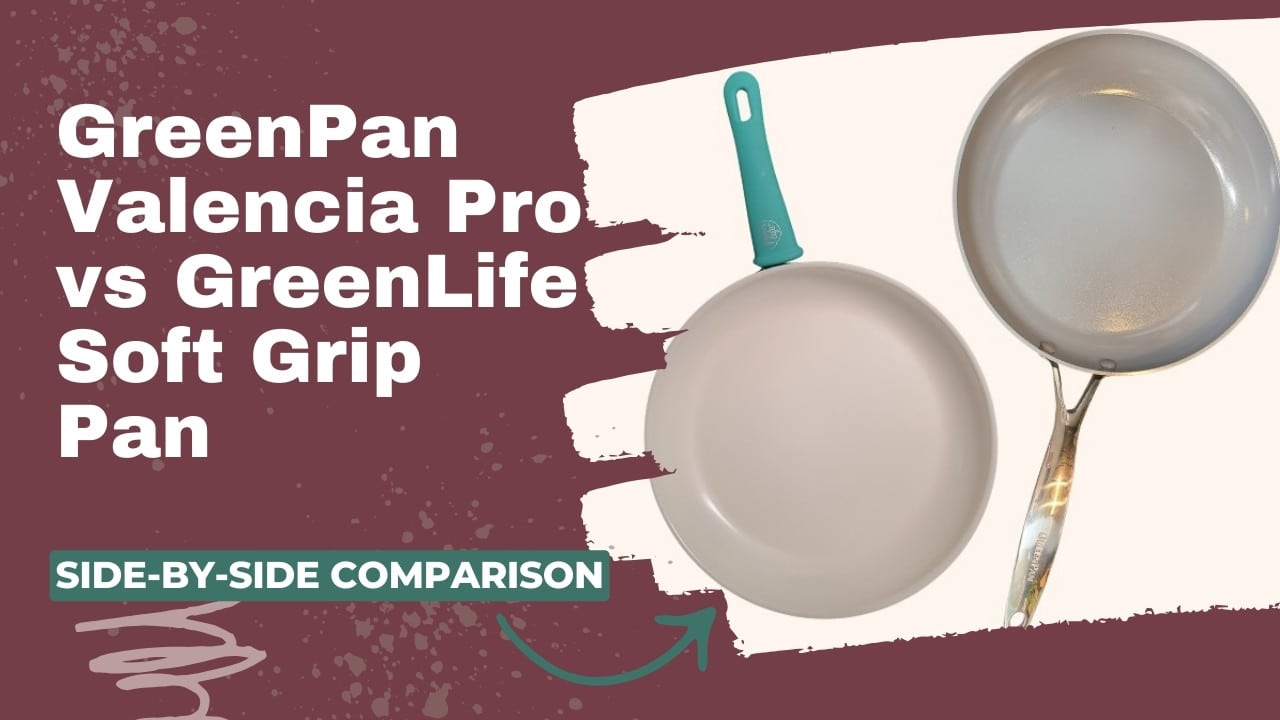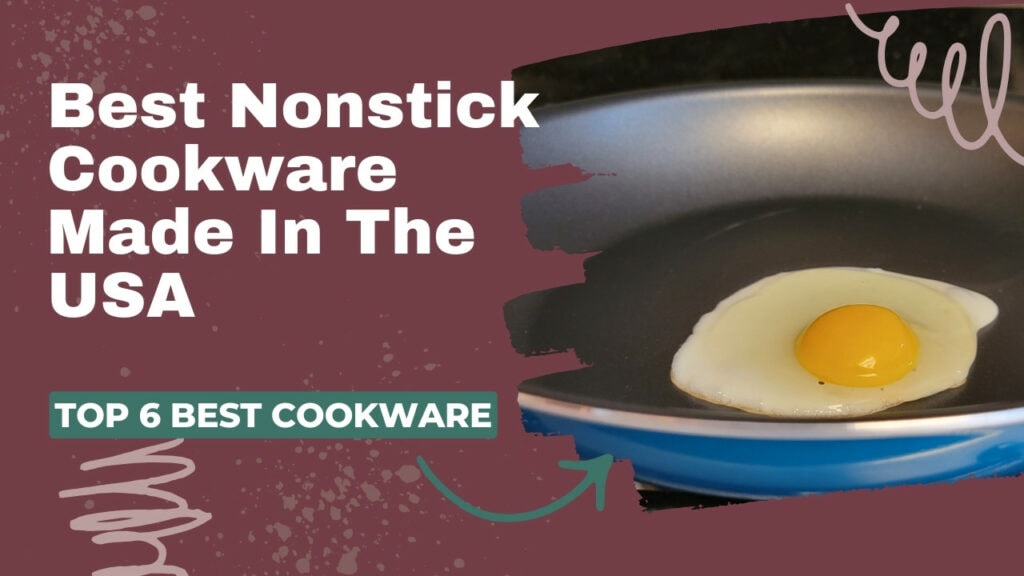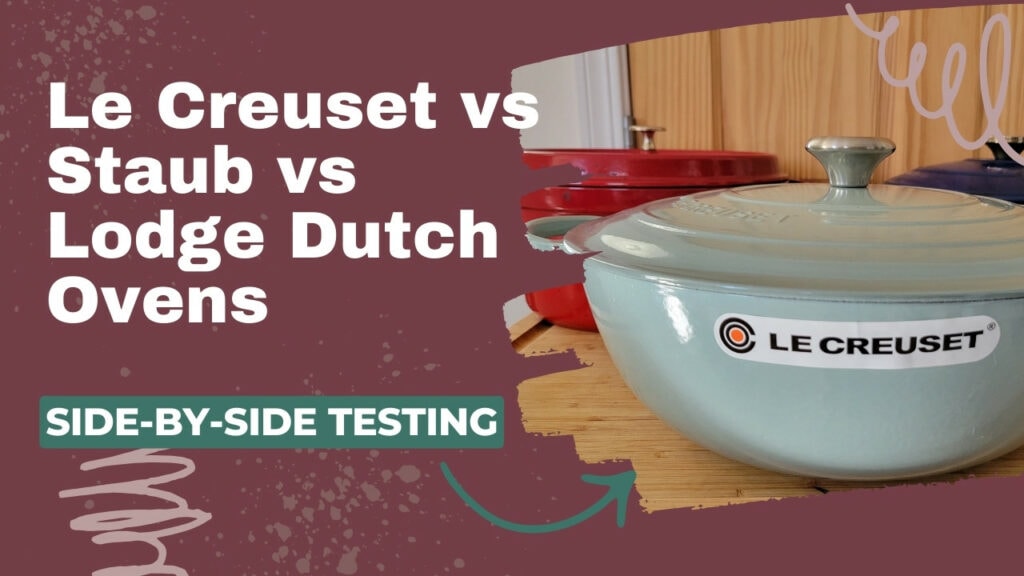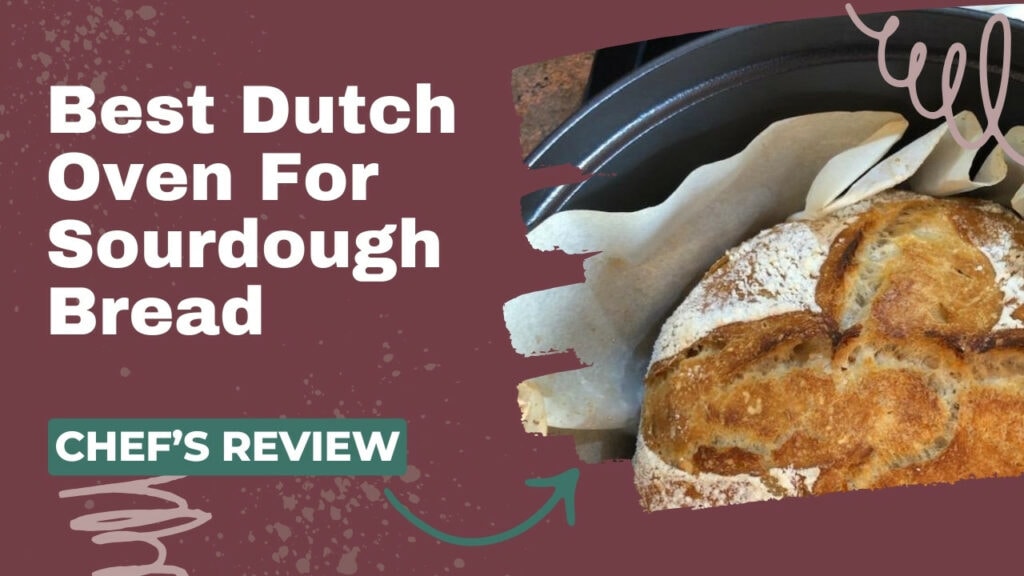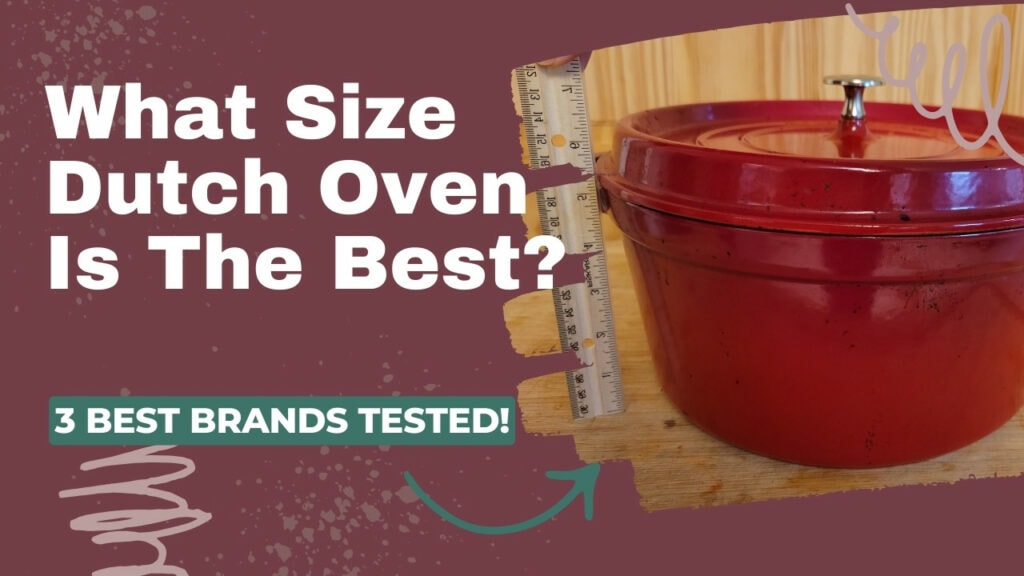So, you’re shopping for a Dutch oven.
Well, I want to promise you something: whether you decide to get a modest 5-quart or a large 7-quart Dutch oven, you are going to love your new piece of cookware. The size and shape of the Dutch oven you buy will affect how you use it – but you can’t go wrong with any of them.
The incredible heat retention of a cast iron Dutch oven will save you so much time cooking, and you’ll be amazed at how easy the enamel is to clean and care for. If you’re like me, you’ll find yourself wanting one in every size!
What’s The Best Size for a Dutch Oven?
The best size for an all-purpose Dutch oven is 5.5 quarts. This size can hold enough chili or stew for 4 people, with plenty left for lunch the next day. It can cook a whole chicken or a 3-pound roast, and it’s not too big for bread or baked goods. It’s light enough to transport easily, and you can fit two of them side-by-side in most ovens. But if you cook for a crowd or you want to batch-cook freezer meals, you may want a larger size.
Dutch Oven Size Chart
Here’s a handy chart that explains the best uses for different sizes of dutch ovens.
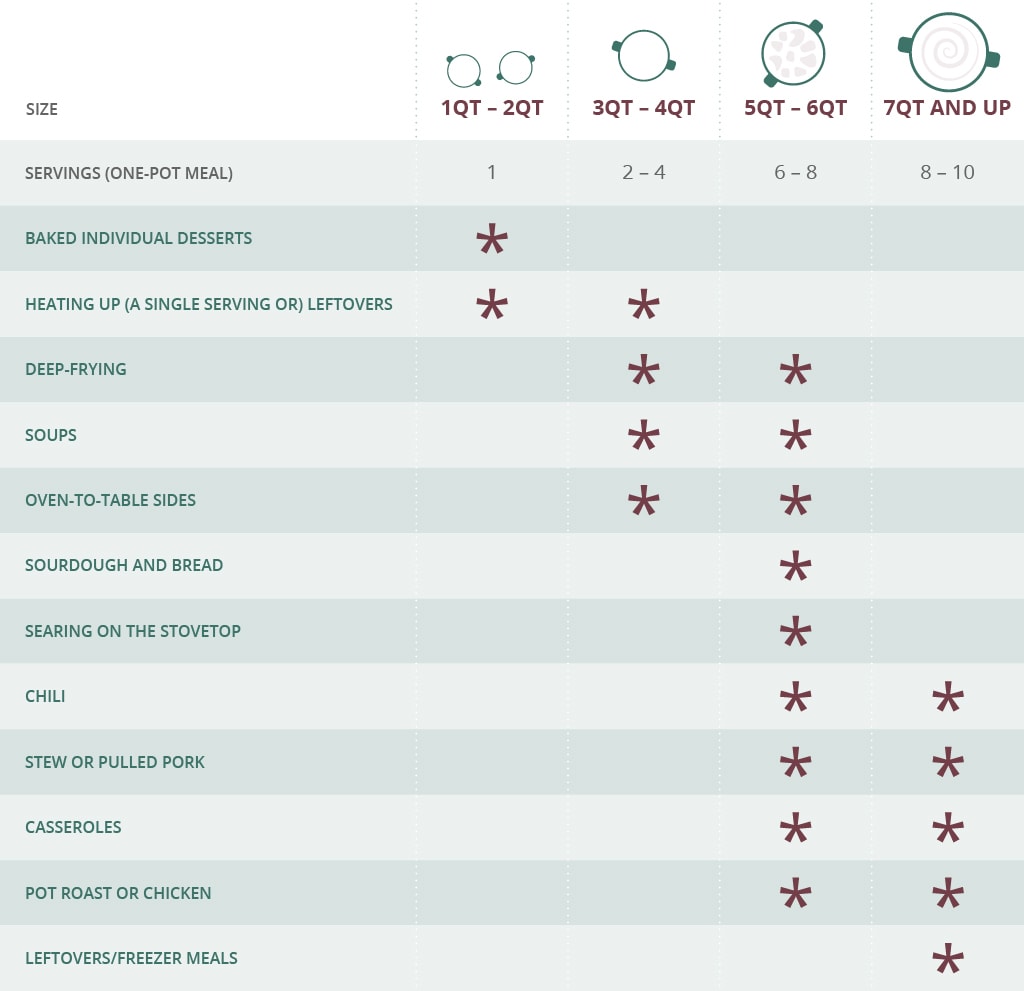
Testing 3 Different Size Dutch Ovens
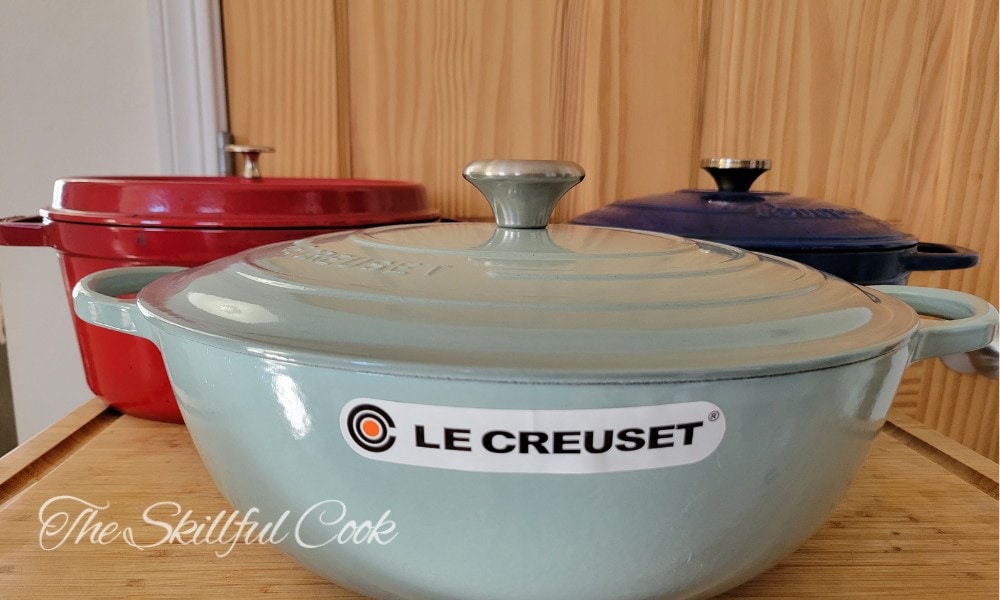
For this review, I spent a couple of weeks cooking in enameled cast iron Dutch ovens of three different sizes, from 5.5 qt to 7.5 qt. I own a 7.5 qt Le Creuset; the other two were a Lodge and a Staub that I borrowed from friends.
My goal was to figure out how a Dutch oven’s capacity affects cooking time, heat retention, and ease of use and handling. I shared the meals with families in my community to figure out how many people a large vs. a small Dutch oven would feed.
I concluded that I wanted to keep all the sizes of Dutch ovens in my kitchen. But I reluctantly gave them back to their respective owners, then added the best all-purpose Dutch oven to my Amazon gift registry.
1qt – 2qt Mini Cocottes: Pros and Cons
Mini cocottes have a capacity of 1-2 quarts or less. They can be as small as 3-4” in diameter and 3” high.
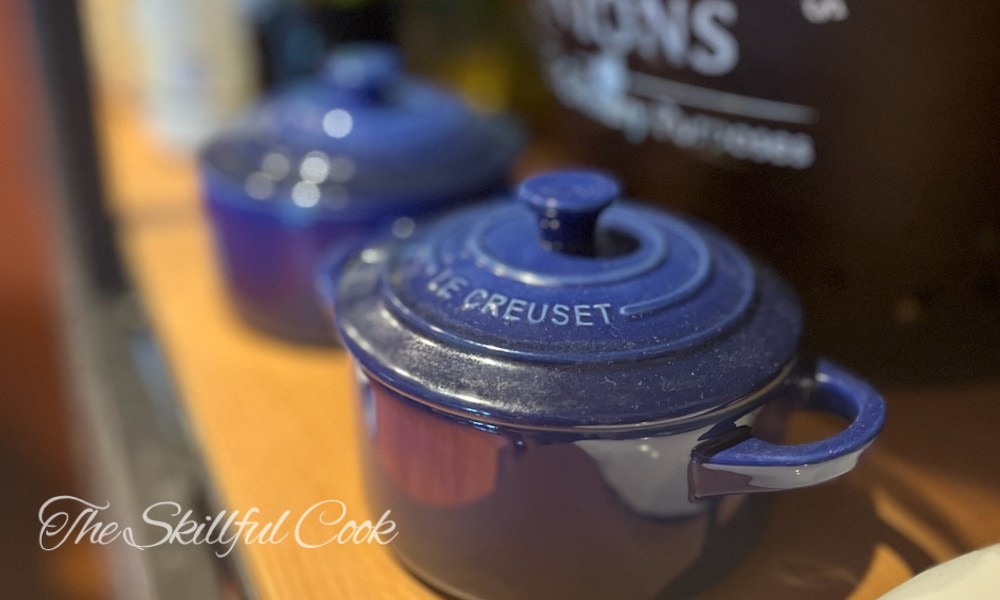
3qt – 4qt Small Dutch Ovens: Pros and Cons
3-4 quarts may seem like an awkward size for a Dutch oven, since it’s not large enough to cook a roast or a significant batch of stew. But it’s big enough for side dishes and is a great size for storing and reheating leftovers. (Frozen leftovers defrost really fast in a Dutch oven!) 3.5 qt Dutch ovens are around 8” in diameter and, if they’re cast iron, weigh 9-10 pounds with the lid.
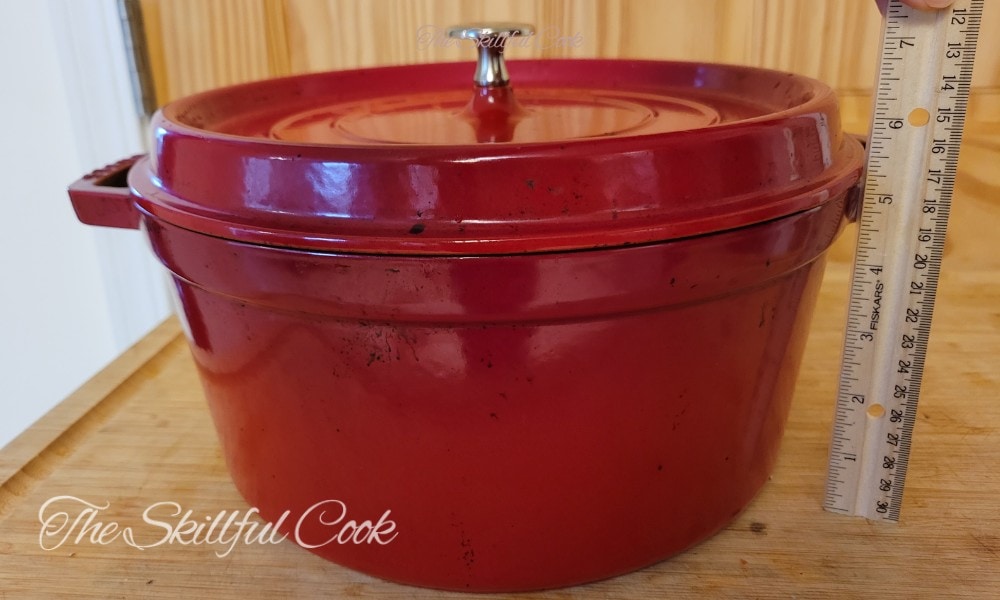
5qt – 6qt Medium-Sized Dutch Ovens: Pros and Cons
The most common size for a Dutch oven is between 5 and 6.5 quarts. These can come in oval or circle shapes. They are roughly 11-13” in diameter and 6-7” high. Iron Dutch ovens this size weigh around 12 pounds with a lid.
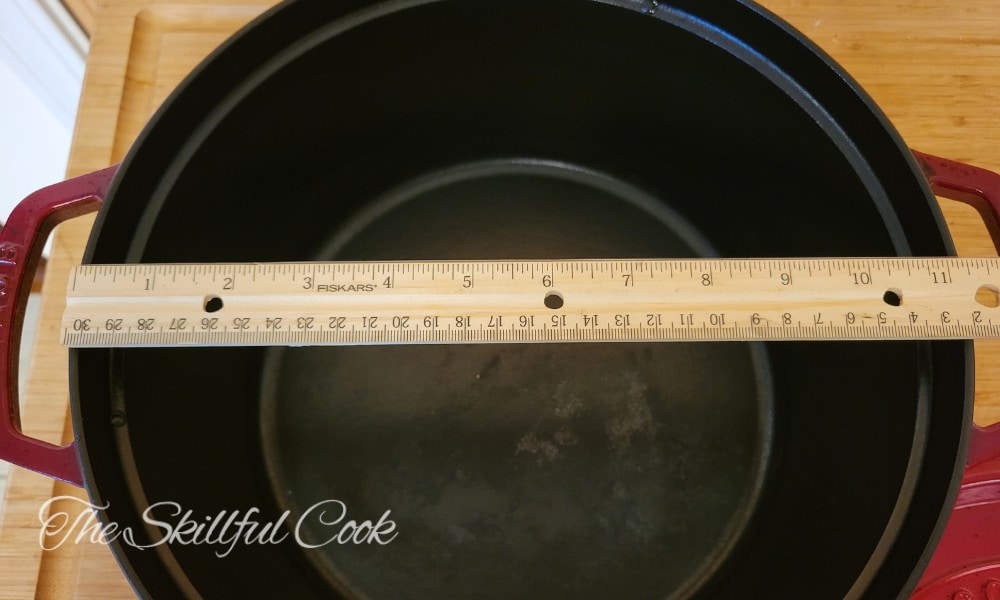
7qt and Up Large Dutch Ovens: Pros and Cons
Le Creuset offers enameled iron ovens in 7.5 qt, 9.5 qt, and gigantic 15 qt sizes. You can also find huge uncoated iron ones from Lodge. The biggest downside to large ovens is the weight; a 15 qt Le Creuset weighs 25 pounds empty, and other brands are even heavier.
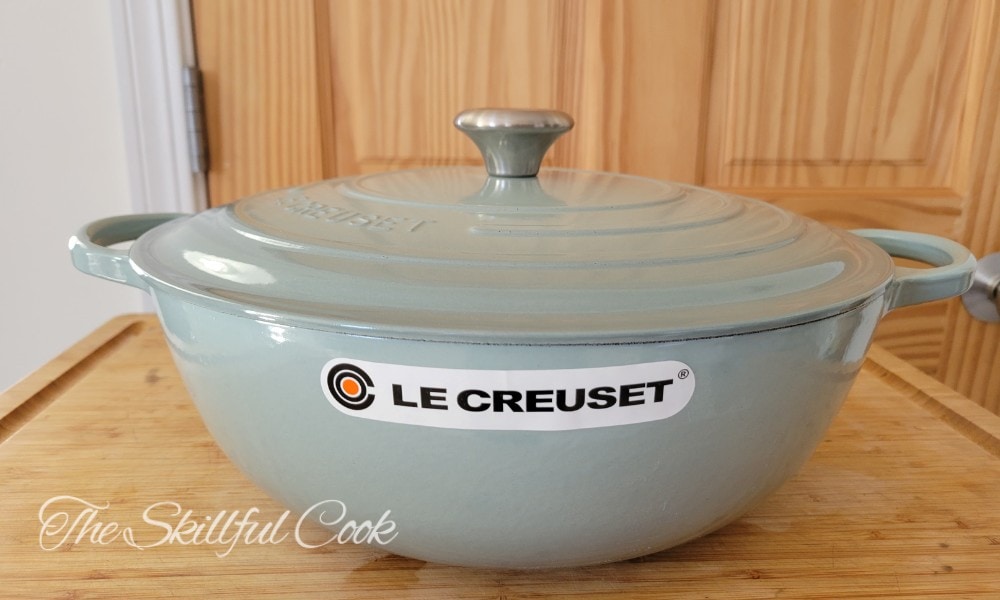
✅ Superior heat distribution and retention
✅ Requires no seasoning
✅ Easy-to-clean
✅ Ergonomic knobs
✅ All cooktops compatible
What Size Le Creuset is Best? A Comparison Table
Note: The following specs are for Le Creuset brand enameled iron Dutch ovens. Other brands are typically heavier than Le Creuset.
| 3.50 qt Round Oven | 5.50 qt Round Oven | 7.25 qt Round Oven | |
|---|---|---|---|
| Width (inc. handles): | 11.75 inches | 13.75 inches | 14.75 inches |
| Diameter: | 9 inches | 10.25 inches | 11 inches |
| Height with Lid: | 6 inches | 7.25 inches | 7.25 inches |
| Weight with Lid: | 8.2 pounds | 11.3 pounds | 12.5 pounds |
| Capacity in Liters: | 3.3 L | 5.3 L | 6.7 L |
| # of People it Serves: | 2-4 | 6-8 | 8-10 |
| Best For: | ✅ Side dishes. ✅ Small baking projects. | ✅ Bread. ✅ All-purpose. | ✅ Large stews. ✅ Roasts. ✅ Casseroles. |
| Downsides: | Too small for a main course for a family. | May not be big enough for leftovers. | Heavy when full. |
| Good for bread? | Okay | Yes | Not ideal |
| Good for table use? | Yes | Possibly | No |
| Country of Origin: | France | France | France |
What Size Dutch Oven To Buy: Things To Think About
The most versatile size for a Dutch oven is a mid-sized one of 5 or 6 quarts. But this size isn’t always the winner. When I polled readers and friends, most people said they would use a larger oven if they could afford it; and most who bought a bigger one did not regret it.
What Do You Want to Cook In It?
The most important question is, of course, what do you want to use your Dutch oven for? Breads? Stews? Fancy desserts? Are you hoping to use it to quickly defrost individual servings of leftovers?
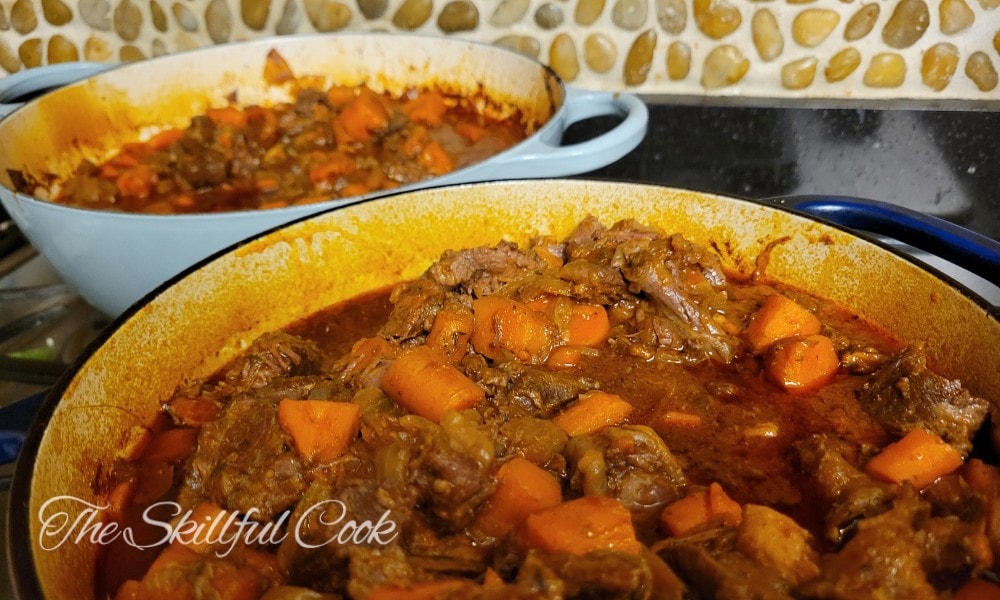
How Many People Do You Need to Feed?
If you’re just cooking for yourself or yourself and another person, 3.5 quarts is a good size. But if you’re hoping for lots of leftovers or take a meal to potlucks, you’ll want something bigger. I plan on about 1 quart per person if I’m cooking a main meal in my Dutch oven – that way, there’s a generous portion for everyone.
Oven and Burner Size
Are you planning to use your Dutch oven on the stovetop before transferring it to the oven? I found that the 5 and 6-qt Dutch ovens heated faster and had much better searing power than the large 7-qt size. But the 7-quart works well on my gas stove if I’m cooking soup or deep frying and need a steady, moderate temperature.
If you have an electric or induction cooktop, you need to find an iron Dutch oven with a base that’s the same diameter as the heating element on your stove. If you don’t, you risk the enamel or the iron itself cracking as it heats unevenly. This is also a risk with ceramic Dutch ovens. (Though not with stainless steel or nonstick ones.)
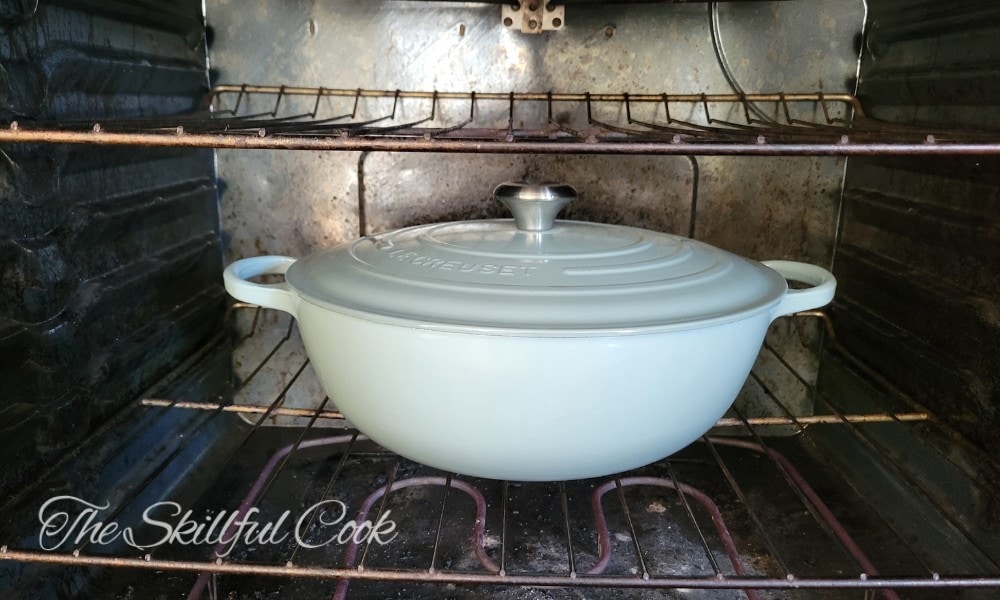
If you’re planning to start food on the stove and transfer it to an oven to finish, measure the oven in your kitchen to make sure a large Dutch oven will fit inside. I like the 5.5-quart size because I can fit two of them side-by-side in my oven.
Shape
Do you prefer a round or an oval Dutch oven? They work almost equally well for braising, but a round one will heat much more evenly on the stove. Round ovens distribute steam more evenly when baking bread.
Weight and Material
Even though a gigantic Dutch oven may be a dream, don’t buy one bigger than you can lift!
The Lodge 12-quart camp oven weighs 20 pounds when empty! Water weighs about 2 pounds per quart, so if you filled this pot with 10 quarts of soup, it would weigh closer to 40 pounds!
Out of all the brands of cast iron Dutch ovens, Le Creuset is made of the purest iron. Its lower carbon content means it can be made thinner than other brands, so Le Creuset ovens weigh less per quart.
Check out the weights of the three ovens that I tested.
The 5.5-quart Lodge weighed 11 pounds, 8 ounces.
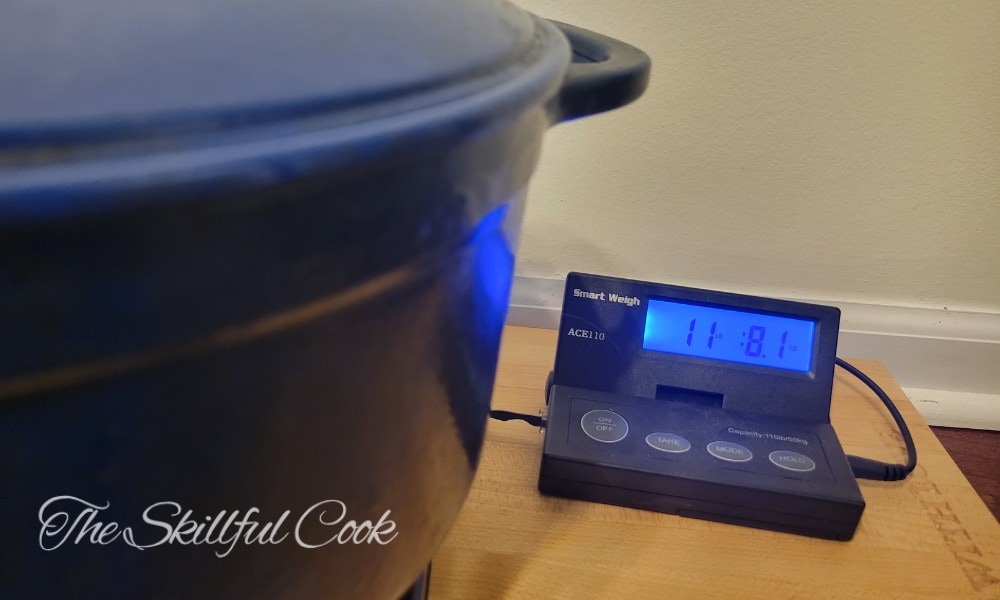
The 6.5-quart Staub was the heaviest at 14 pounds, 14 ounces with the lid.
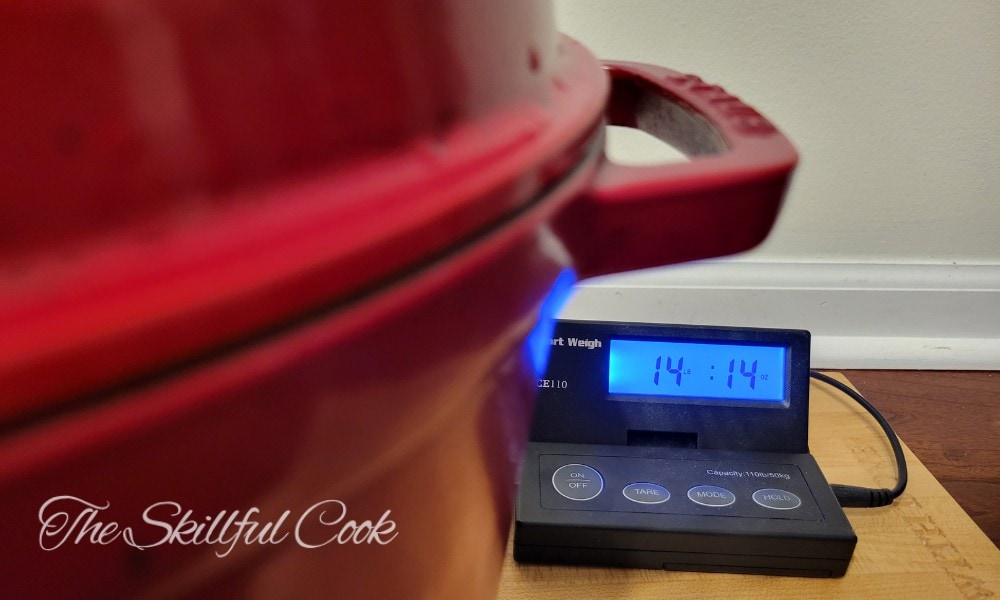
The 7.5 qt Le Creuset soup pot was over a pound lighter than the smaller Staub oven and weighed 13 pounds, 11 ounces.
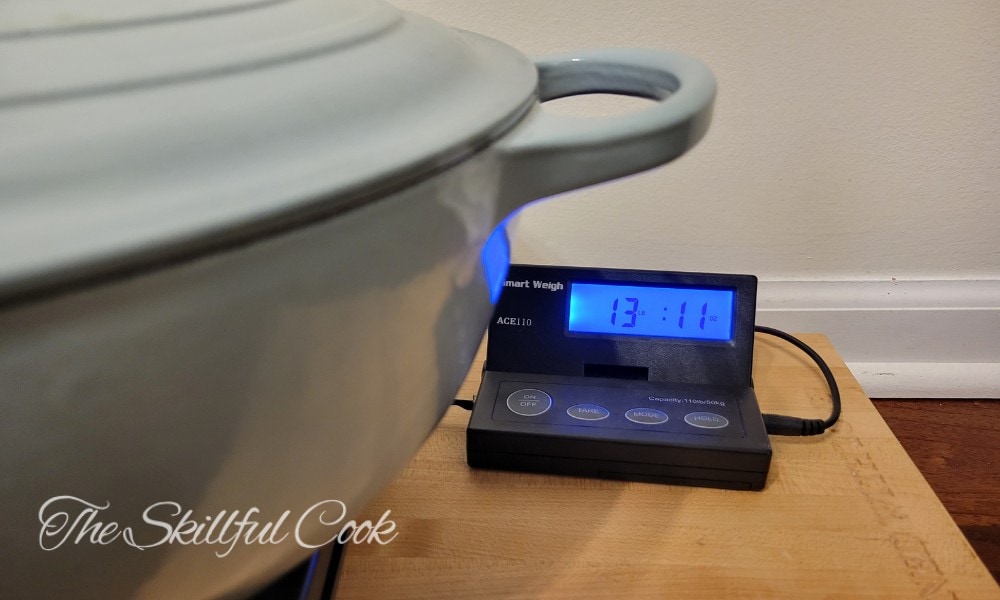
The extra weight gave the Staub better searing power and incredible heat retention. But it also makes it heavy and harder to wash. I’m a petite woman – and though I consider myself a strong one– I still ask my husband to carry the big Dutch ovens to the fridge in the basement when they’re full of food.
The photo below illustrates why the Le Creuset ovens are lighter than their counterparts of the same size. The iron walls of the Lodge oven (blue, right) measured 5.4mm thick. The walls of the Le Creuset measured 3.6mm.
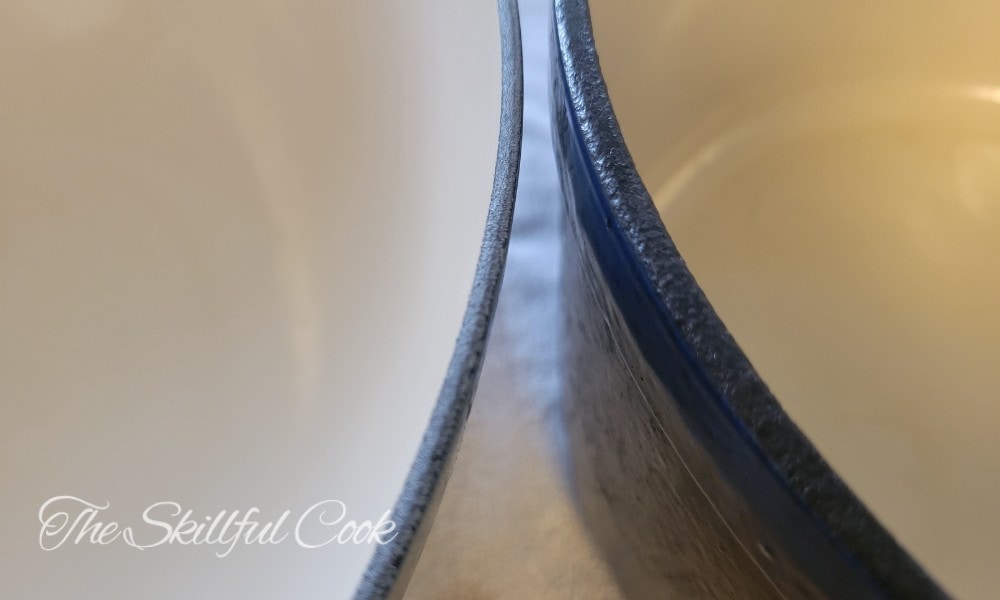
Of course, Dutch ovens don’t have to be made of cast iron. These large pots are much lighter weight if they’re made from ceramic clay, stainless steel, or coated aluminum.
Storage Space
One of my favorite things about enameled cast iron is that you can store food in it. When I’m way too tired at night to do the dishes, I’ll pop the whole Dutch oven into the fridge. That is – if it fits. How much fridge space do you have? Where will you store the Dutch when you’re not using it? These colorful enameled dishes look gorgeous sitting on a counter – but how much counter space do you want to devote to decorative pots?
Budget
Just like there’s a range in weights between different brands of Dutch ovens, there’s a huge price discrepancy as well. You can buy a large-size made-in-China Lodge or Amazon Basics enameled Dutch oven for under $100.
But if you’re a French-made cookware devotee, you may have to save up to afford the 6.5 and 7-quart Lodge and Staub ovens. The 4 and 5-quart sizes tend to be more affordable. Lodge makes a line of enameled Dutch ovens in the United States, but they cost significantly more than their products made overseas.
Testing Dutch Ovens of 3 Different Sizes: 5qt vs 6qt vs 7qt
I had the privilege of testing three different Dutch ovens, so I wouldn’t have to guess which one I wanted to buy.
The Capacity Test
First, I did a capacity test. I filled each with water, measuring the water as I added it.
The Lodge held 5.5 qt when filled to the brim.
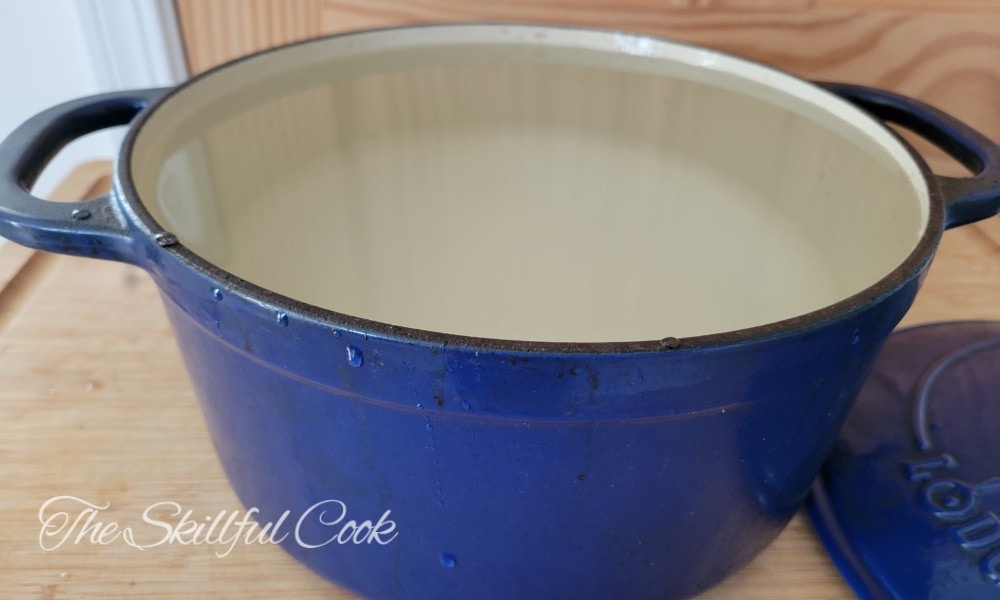
The Staub held 5.5 qt at the lower rim and 6 qt at the upper rim.
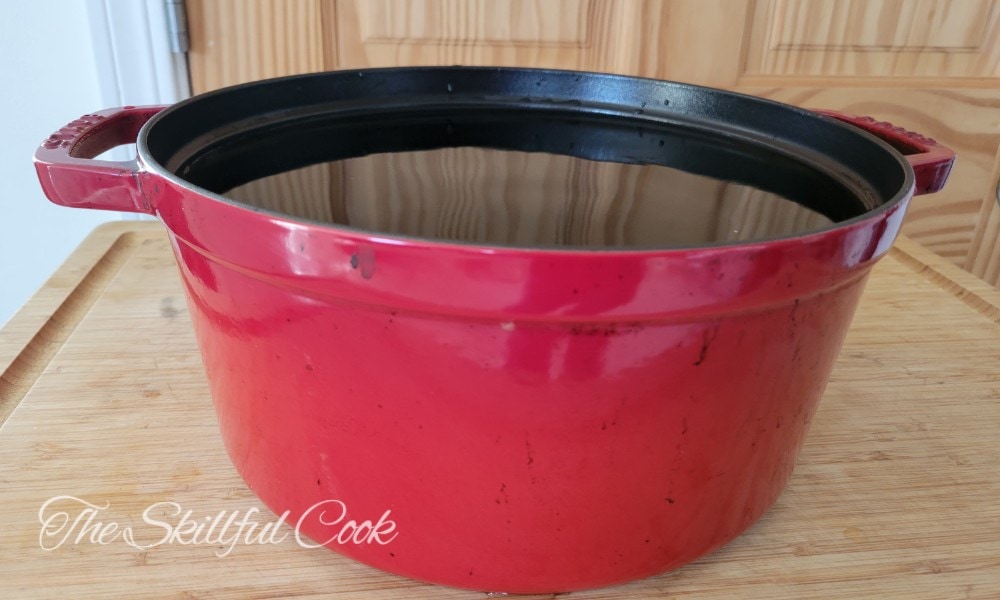
The Le Creuset held 7.5 qt at the brim.
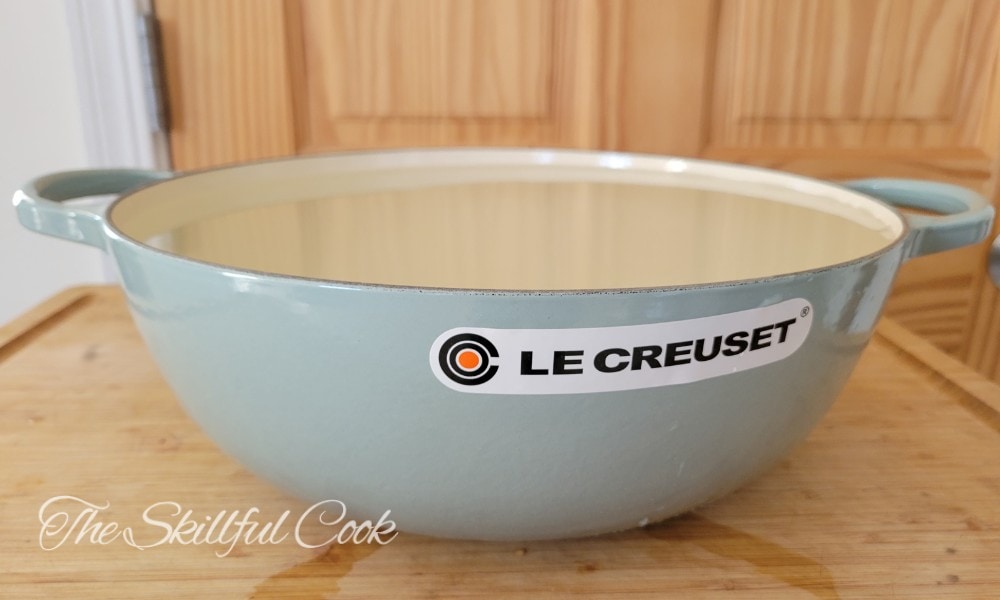
Takeaway: The Staub, although marketed as a 5.5qt, actually had a higher capacity. Since you would never fill a Dutch oven to the very brim, this felt like extra space.
Searing Meat
The first thing I cooked in all three Dutch ovens was pork for carnitas. First, I seared the meat in the Dutch ovens on the stove. At my gas stove set to level 6 for 6-10 minutes, the Staub seared the meat most effectively and the Le Creuset the slowest.
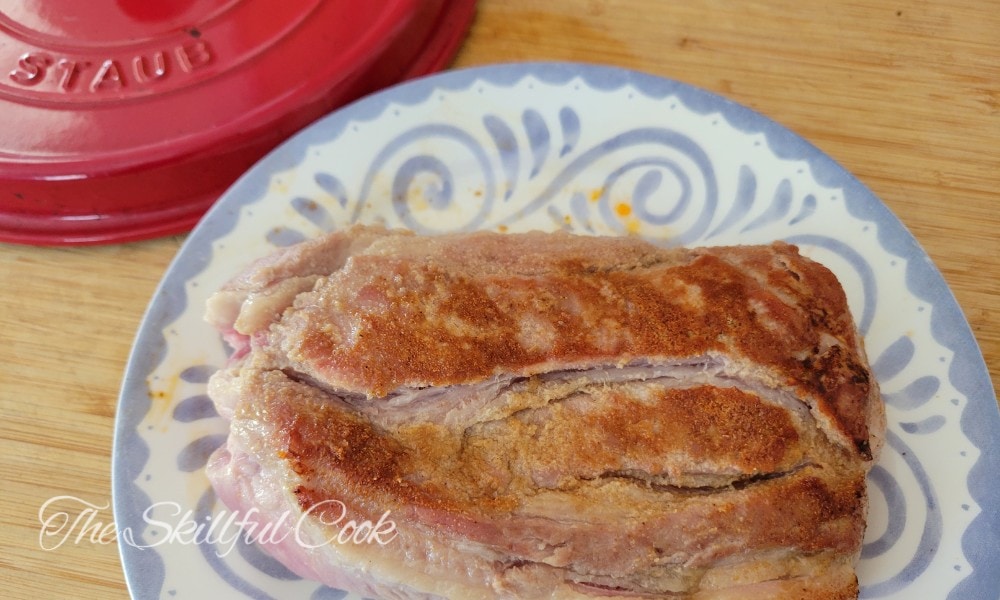
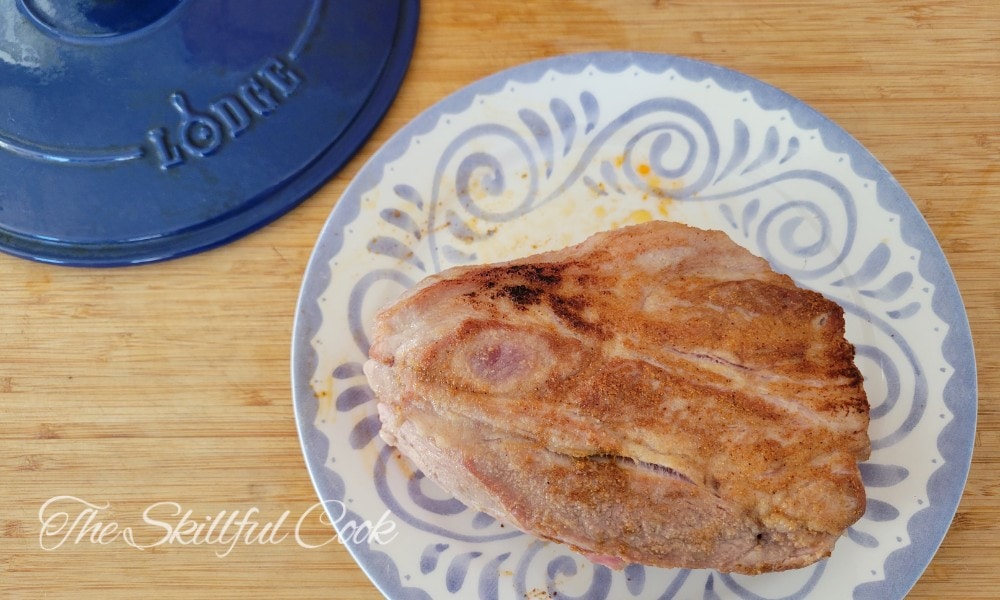
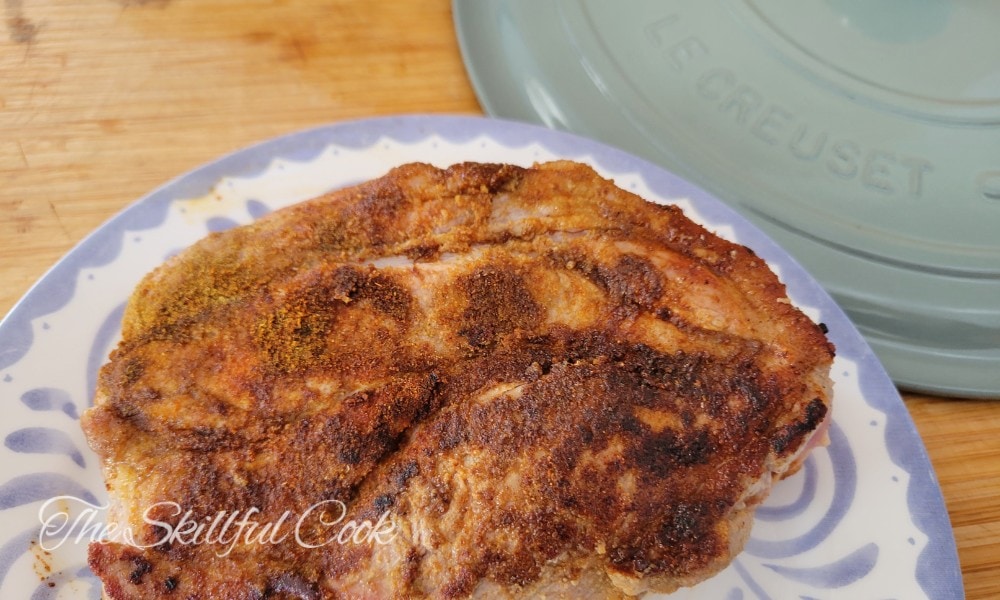
Takeaway: The Le Creuset chef’s oven, due to its large size (and possibly thinner iron), didn’t heat as effectively on the stove and began to burn the crust and steam the meat.
Cooking a Roast
Next up was braising the pork for carnitas. I discovered that I could comfortably fit one pound of meat per quart into the Dutch ovens. So the Lodge held 5.5 pounds of meat, the Staub 6 pounds, and the Le Creuset 7.5 pounds. I cut the meat into 1.5 to 2-pound pieces.
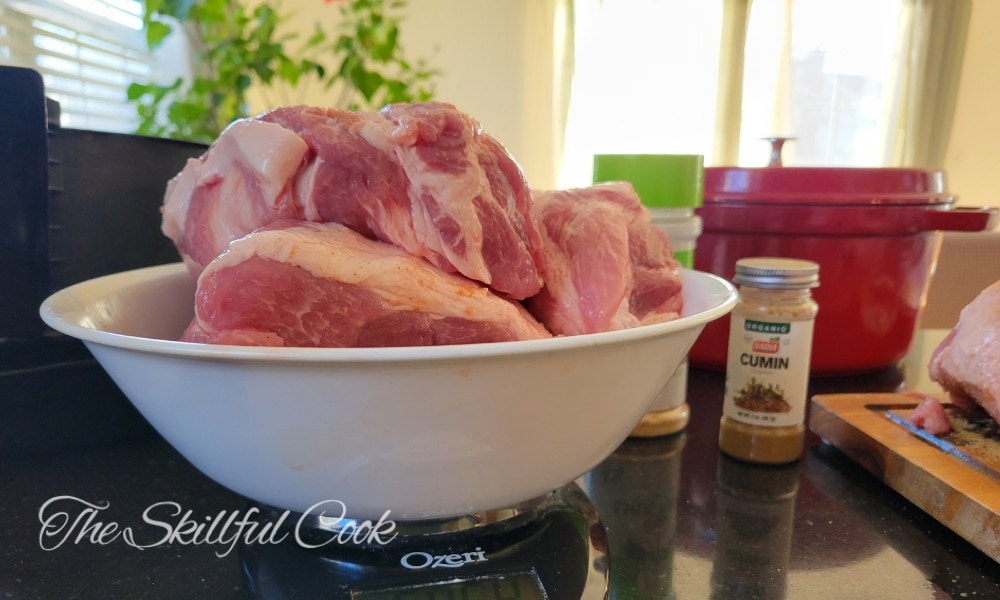
I checked the temperature of the meat after 1 hour in the oven at 300°F. The Staub and the Lodge had come up to a good temperature for cooking by that time; the larger Le Creuset wasn’t there yet.
After 2.5 hours in the oven, the meat in all three pots was almost exactly the same temperature – around 174°F. The meat in the Staub was pull-apart tender and done. The pork in the Lodge and Le Creuset ovens weren’t quite ready yet.
The pork was done in the Lodge at 3 hours and in the Le Creuset at 3 hours and 30 minutes.
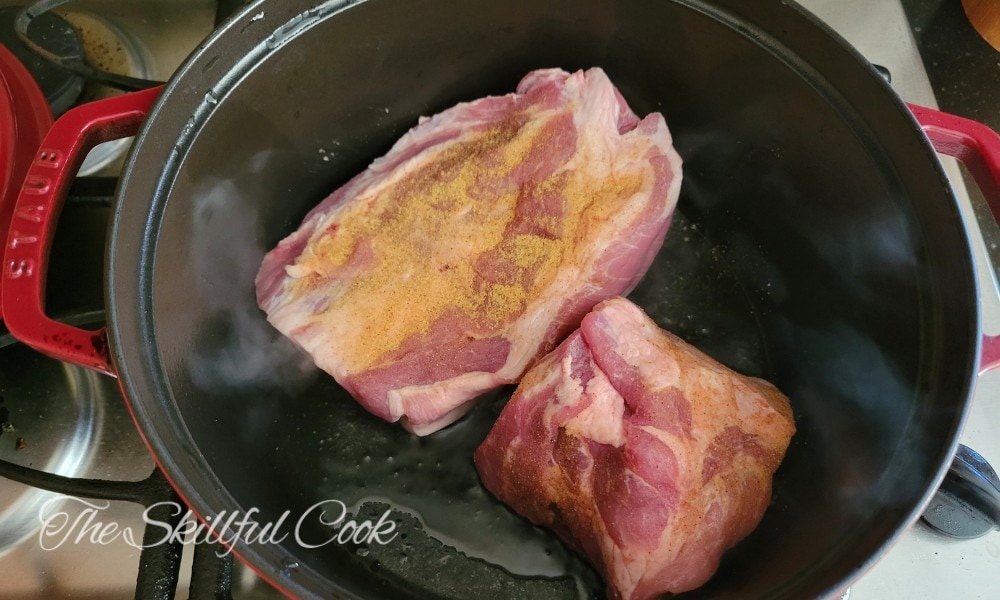
So the Staub oven cooked the fastest, even though it was a bit larger and contained more meat than the Lodge. I attribute this to the self-basting feature of the Staub lid. As I handled the ovens, I felt that the Lodge was made with less precision than the other brands, and I could see more steam escape from the Lodge while it was cooking.
Takeaway: The construction quality of the Dutch ovens affected cooking performance more than the size of the pots.
Cooking Stew
Later in the week, I cooked beef bourguignon in all three Dutch ovens. I share more details about this cooking experience in my Staub vs Le Creuset vs Lodge comparison article. But there’s one thing I want to mention here: when cooking a stew, the pots with a higher capacity took longer to come to temperature. But once they were at a stable cooking temperature, all three pots took the same amount of time to finish cooking.
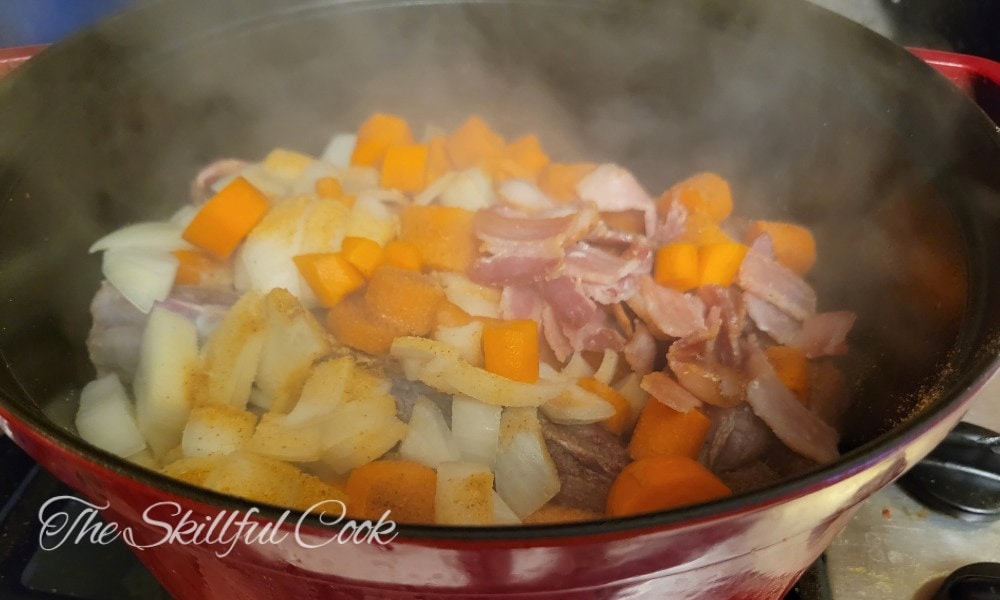
Takeaway: Larger pieces of meat take longer to cook, no matter what size oven they’re cooked in. But if you’re making stew or soup with chopped-up ingredients, cooking a big batch in a large Dutch oven won’t take much more time than a smaller batch in a smaller oven. So the 7 and 9-quart ovens are more efficient.
Baking Sourdough Bread
The best Dutch oven for sourdough bread has an interior diameter of 7-10 inches. This translates to a 4 to 6-quart capacity. Depending on what size loaf you want to make, you should find a Dutch oven that has a 4qt capacity per 1kg of flour you use in your recipe.
The loaves baked in the 5.5 and 6.5-quart Dutch ovens both had a nice shape and a good crust, but the loaf in the smaller oven had better oven spring, with a denser crumb. The 6.5-quart Dutch oven had a more open crumb.
The loaf baked in the 7.5 qt Le Creuset Chef’s oven opened nicely along the score lines, but the loaf was a flatter shape than I liked. The higher lid didn’t hold the steam close enough to the loaf to create a very crispy crust.
Frequently Asked Questions
Is a 6qt Dutch Oven Too Big?
Not at all! A 6-quart Dutch oven is a perfect size for cooking stews, soups, bread, chicken pieces, or small roasts. If you cook only for yourself and don’t like leftovers – then, yes, a 6qt Dutch oven may be too big for you. But for most people, 5-6 quarts is just right.
How Many People Does a 5qt Dutch Oven Feed?
A 5qt Dutch oven feeds 3-4 people a main course or 5-8 people a side dish. It’s big enough to make enough stew for myself, my husband, and our two preschoolers. But my sister-in-law, who has four growing boys, has trouble saving leftovers even when she cooks in a 7-quart Dutch oven.
Can You Cook Small Recipes in a Large Dutch Oven?
Sure! You can enjoy the cooking power and heat retention of a large oven even if you don’t always fill it to capacity. Dutch ovens with self-basting lids (e.g. Staub) will help reduce evaporation and cook smaller amounts of food evenly. Just make sure to adjust cooking times as necessary.
Conclusion: What Size Dutch Oven Would I Buy?
After testing three Dutch ovens of different sizes, I’ll continue to use my 7.5 quart Le Creuset for stews and chili. Even though it was the largest of the three, its lighter weight per quart made it surprisingly easy to handle.
But if you’re looking for an all-purpose Dutch oven for your family or to put on a wedding registry, I’d recommend a 5 or 6-quart Staub. It’s such a versatile size for baking, searing, and frying that I’m hoping to grab one for myself someday.
What size Dutch oven has worked for you? Did you wish you got a larger or smaller one? Let me know in the comments!

